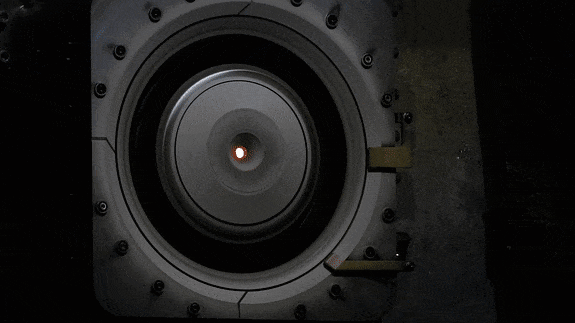
Maxar Technologies and Busek Co. confirmed successful completion of an end-to-end hot fire test campaign validating all major elements of the 6 kW solar electric propulsion (SEP) subsystem being designed for the Power and Propulsion Element (PPE), which will propel NASA’s Gateway around the moon. This multi-week test was the first time this hardware was operated as a fully integrated string that’s representative of the flight system. The ground demonstrations were funded by NASA’s Space Technology Mission Directorate under a Tipping Point public-private partnership.

The PPE thruster system features the Maxar-built high-power control electronics (PPU-6000), a Moog-provided xenon feed system and four Busek-built BHT-6000 Hall effect thrusters. Together, this system is 30% more powerful than any SEP system previously flown by Maxar or Busek. These thrusters will later be combined with other, higher-power thrusters to complete the PPE’s 50kW electric propulsion system. The PPE will be the most powerful electric propulsion spacecraft ever flown.

The goal of this test campaign was to run multiple startups and shutdowns and numerous other flight-like scenarios to demonstrate that the thruster system is ready to transit Gateway around the moon. Successfully completed, this testing validated the dual-mode operation of the SEP string at 300 V/600 V and a variety of power levels, up to 6 kW and 600 V.

The PPE will provide power, maneuvering, attitude control and communications systems for the lunar orbiting outpost. Gateway is a foundational part of NASA’s Artemis program, which aims to land the first woman and next man on the moon and enable future crewed missions to Mars. The PPE is managed by NASA’s Glenn Research Center in Cleveland, Ohio, and Maxar is working on the program from its facilities in Palo Alto and San Jose, California. The end-to-end hot fire test was completed at Busek’s facilities in Natick, Massachusetts.
“Busek’s BHT-6000 electric thrusters offer high-power capabilities at a competitive price point and are a great fit for both our near-Earth and deep space programs,” said Robert Curbeam, Senior Vice President of Space Capture at Maxar. “The SEP systems we are evolving for PPE are a fantastic example of innovative commercial technology with great flight heritage being leveraged for NASA programs. We continue to make steady progress on the Power and Propulsion Element, with the next major milestone being the spacecraft Preliminary Design Review, which is targeted for later this year.”
“Busek is extremely proud to provide next-generation Hall thrusters for the Power and Propulsion Element. This will be the first time a crewed platform leverages electric propulsion technology. We applaud NASA’s commercial procurement approach to PPE and Maxar’s vision for the BHT-6000. While we may only play a small role in this historic Artemis program, this is an extremely important mission to our team and organization,” said Vlad Hruby, President and Founder of Busek.

